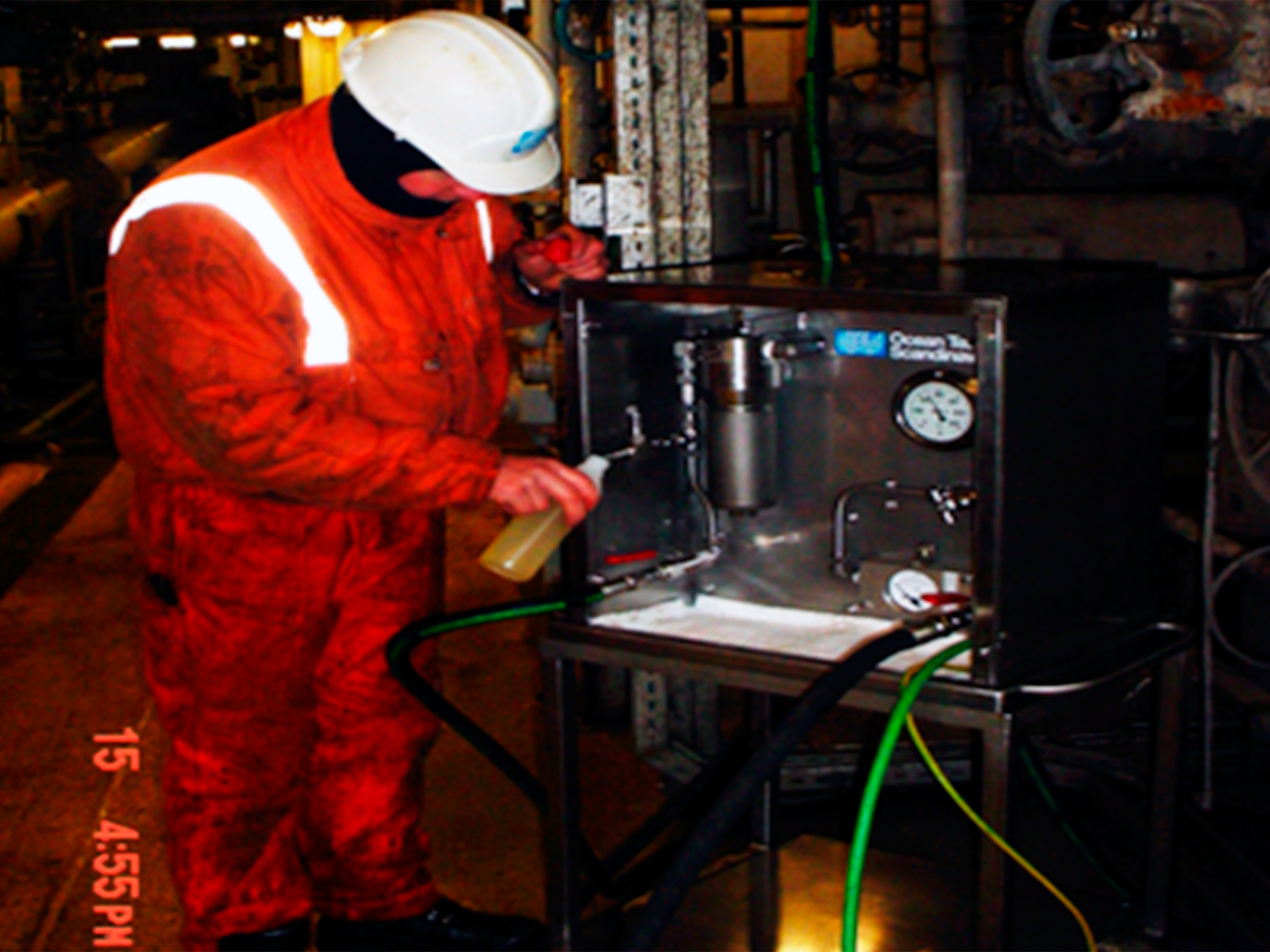IKM Ocean Team have developed a new method of oil-flushing which enables us to clean live systems without closing down production. This solution is extremely attractive for the majority of our customers, especially for oil flushing static hydraulic systems, e.g., emergency shutdown systems (ESD) and hydraulic wellhead panels on offshore oil and gas platforms, where considerable advantage can be gained from keeping production up and running while the hydraulic systems are oil flushed by means of turbulent, pulse-induced wave flow. In addition to the customer is assured of fewer unexpected shutdowns, the hydraulic systems are maintained in the best possible way.

Save the cost for an avided shut-down with on-line pulsed flushing of live systems.
One major side benefit of using IKM Ocean Team’s on-line pressurised pulse-induced wave oil flushing technology compared to conventional oil flushing methods is that you save the cost of interrupted production. Another significant benefit of on-line oil flushing is that no expensive installation work is required to carry out the flushing.
IKM Ocean Team’s on-line oil flushing method proves to have an added bonus. While the closing times of most X-mas trees are obviously excessive before flushing, 90% of the wells have considerably reduced closing times after flushing, a significant benefit in addition to the clean hydraulic system. In fact, the successful reduction in closing time more or less removes the focus from the initial purpose of flushing: To clean the system.
The two are, however, closely connected.
In the majority of cases involving prolonged closing times it helps to condition the solenoid valves, either mechanically (which, however, means closing down production) or by means of on-line pulsed flushing. It turned out that the sleeve valve of the solenoid valve (SOV) develops a certain degree of sluggishness (varnish). Consequently, the oil passes only slowly, making the well close more slowly (sticky valves). The question is; what causes such sleeve valve sluggishness? A number of plausible reasons have been put forward. For example that the magnetic spool is energised for so long that the shaft becomes magnetised. The sleeve valve therefore remains in position for some time after power has been interrupted. Alternatively, the spring may have become slack after extended periods of tension.
Our theory, however, is – and always has been – that the sluggishness is caused by dirt getting stuck in the tolerance area between the sleeve valve and the cylinder valve. During pulse-induced wave flushing, such particles are dislodged and led to the flush filter. This reduces friction resistance within the valve and increases the oil flow speed, which in turn explains the shorter closing times of the wells.